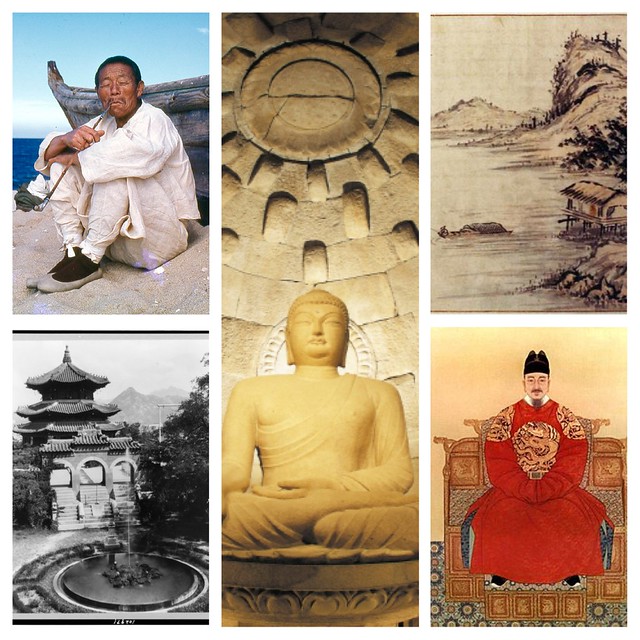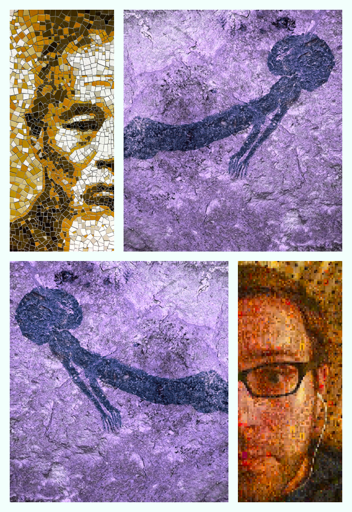
So building on my previous post, we now get to mobile media and the methodologies we might employ to make that activity visible. For this post, these all exclusively focus on mobile media as it relates to informal practice; my research is concerned with mobile media and mobile use that oscillates across informal/formal, individualized/socialized, and high/low transactional distance dichotomies. As with the previous post, I am going to put the references up front for anyone interested in looking at mobile use for media practices in Korea (or Asia). The Hjorth works in particular are quite good. I will be posting a third part on what I see as the methodological pitfalls of mobile learning and the methods I actually chose to collected data; granted, it is written from my decidedly academically naive point of view, but there you have it.
References
- Goh, D. H. L., Ang, R. P., Chua, A. Y., & Lee, C. S. (2009). Why we share: A study of motivations for mobile media sharing. In Active Media Technology (pp. 195-206). Springer Berlin Heidelberg.
- Haddon, L., & Kim, S. D. (2007). Mobile phones and web-based social networking-Emerging practices in Korea with Cyworld. JOURNAL-COMMUNICATIONS NETWORK, 6(1), 5.
- Hjorth, L. (2013). Locating the Visual: A Case Study of Gendered Location-Based Services and Camera Phone Practices in Seoul, South Korea. Television & New Media.
- Hjorth, L. (2009). Mobile media in the Asia Pacific: gender and the art of being mobile. Taylor & Francis US.
- Hjorth, L. (2008). Being Real in the Mobile Reel A Case Study on Convergent Mobile Media as Domesticated New Media in Seoul, South Korea. Convergence: The International Journal of Research into New Media Technologies, 14(1), 91-104.
- Ok, H. Y. (2011). New Media Practices in Korea. International Journal of Communication, 5, 320-348.
- Ok, H. R. (2008). Screens on the Move: Media Convergence and Mobile Culture in Korea. University of Southern California.
- Squire, K. (2009). Mobile media learning: multiplicities of place. On the Horizon, 17(1), 70-80.
Mobile Media Models
The following studies have all proven useful in the construction of a methodological approach for this thesis. All in some way involve research on mobile communities or social practices in Korea; most remain or gravitate towards informal practices rather than formal disciplinary activity commiserate with university level participation. The studies presented here also ascribe to the guidelines as outlined prior in this methodological chapter. Namely, they
- Are consistent with the Korean cultural context of mobile technology use, i.e. is technologically localized to the Korean context of coming to know through mobile technology
- Provide evidence of informal or formal participation by graduate students in the Humanities in Korean universities, participation that oscillates between high and low transactional distances and individualized and socialized behavior (Park, 2011)
- Prove logistically feasible in terms of data collection and participant access
- Allow for the inclusion of qualitative data that is textual or multimodal
Emerging media methodologies, the kind being addressed in this thesis through mobile technology use in graduate students at Korean universities, attempt to identify and observe complex practices of interaction between learners and their artifacts for learning. Galloway (2013) helps establish a particular focus for constructing mobile media methodologies in this context, a focus that has partly inspired the methodology chosen for this research. In this focus, several questions were asked to frame a methodological framework, yet the following stand out as being most relevant to this thesis. Namely,
- How do anticipation and expectation of particular futures mobilize people to create them—or attempt to prevent their creation?
- How do these practices of cultural (re)production support or challenge the intentions of the designers?
- How can existing empirical research methods such as media ethnography incorporate more material and speculative elements to better reflect these subjects and objects of analysis?
In the case of the first question in the context of Humanities participation in Korean universities, a rephrased question more relevant to this thesis would be how do anticipation and expectation of particular technological and disciplinary futures mobilize participants to create them? In this rephrasing, we see evidence of two discrete, yet overlapping, activities. We see the use of mobile technology, its current practice, and future expectation and we see disciplinary practice as it stands currently and how it is expected to evolve. Both presumably would be present in qualitative data being collected from graduate students in the Humanities, how they use mobile technology, what is produced there, and what participation in the Humanities looks like when mediated through mobile technology. For the second question, we are less concerned with how practices of cultural (or disciplinary) production challenge the intentions of the designers, but rather how mobile media production supporting (informally or formally) disciplinary practice challenges the practices of the discipline itself. The third can stand as is as it reflects a broader development in methodological design in mobile media projects. For the purposes of this thesis, how would media ethnography in the Korean graduate student context be complemented by additional streams of data or observation points? The following studies push towards answering all those questions.
Haddon & Kim (2007) conducted a study exploring the practices emerging from mobile phones and web-based social networking in Korea via the aforementioned Cyworld. While this study focused exclusively on informal practices for communication, the methodology employed provides a model for this research study. Haddon & Kim used interviews with four students from an English course taught by one of the researchers. Each student was interviewed twice and additional data was collected through diaries which chronicled their activities in these social networks on a timeline. The interviews proved rich for analysis, illustrating examples of emerging practice and personal approaches to social media and demonstrating areas of divergence amongst the interviewees. Haddon & Kim complemented this study with an additional qualitative study involving 30 interviews (2007). The methodology employed in this study directly references the research questions being addressed, namely the relationship of the individual to their social community (via Cyworld), the relationship between the social community and the mobile phone in terms of new media practices (phone images), and how those practices relate to the Korean cultural context of social communication. Such a methodology could be appropriated for the purposes of this thesis with a relatively small cohort of graduate students in the Humanities being interviewed on multiple occasions and asked to provide records of their media practices supporting their disciplinary work in mobile settings (media artifacts or compositions that were, at least in part, composed in mobile technology). These artifacts could be used to triangulate, to some degree, the findings from extracted from the interviews.
Haddon & Kim are attempting to identify emerging practices in communication influenced by mobile technology, an example of a larger research trend towards identifying new practices in participation. A methodology that furthers Haddon & Kim’s approach is Goh et al (2009)’s study on why mobile users share media in terms of motivations and information needs. The methodology employed in this study mirrors Haddon & Kim’s approach: participants were asked to maintain a diary for a month that documented their media sharing activities (2009). These diaries were buttressed with data collected from post-study interviews; both these data collection methods were used to identify motivational factors in media sharing. For the purposes of this thesis, it would be necessary, in order to answer the research question on what types of mobile materials were being produced in the Humanities in South Korean universities, to supplement the diary and interview approach with some sort of artifacts or portfolio or artifacts designed to indicate the range of compositions and media being created in mobile technology.
Hjorth (2013) advances this critique of emergent media practices in mobile environments in Korea through her case study approach to gender, location-based services, and camera phone practices in Seoul, Korea. Hjorth employed a case study technique that followed participants through location-based service (LBS) applications and media sharing practices and how these applications and activities illustrated the relationship between gender and camera phone practices. This study continues an exploration begun in her 2009 study on mobile media in the Asia Pacific region and how gender influences the state of being mobile. In Hjorth’s 2013 study, The LBS environment provides the vantage point from which to construct the methodology to identify emerging practices. Hjorth used focus groups, surveys, and in-depth interviews to collect the data. Perhaps more importantly, she is attempting to make visible practice that oscillates consistently between states of being (geographical, social, personal); this is particularly relevant to this thesis as it attempts to make visible the oscillation between informal and formal, individualized and socialized states of activity all commiserate with disciplinary practice. Based on Haddon & Kim (2007), Goh et al (2009), & Hjorth (2013), it is becoming clear that in-depth interviews, along with some sort of media or compositional artifact collection, will form a significant portion of the data collection involved in this thesis’ methodology. Further studies, all exploring mobile media and geographical impact, include Squire (2009) and the aforementioned Hjorth (2009). These studies all are indicative of the “mobility turn” (Urry, 2002) in the social sciences and how the mobile phone becomes a vantage point for observing this mobility turn; while this thesis is less concerned with geographical location per se, it is concerned with mobility through these learning spaces, informal, formal or otherwise.
Hjorth (2008) further advances the relationship between mobile media and emerging practice in her study on mobile media found in artistic installments; it discusses the capacity of mobile technology (specifically, the emerging practices stemming from mobile use) to blur the distinctions between creator/artist and audience, which might prove complementary to this thesis’ attempt to follow the learner’s oscillation between informal and formal, individualized and socialized states of being. Methodologically, this study implicitly emphasizes the need for some sort of artifact analysis to complement interview or observational methodologies. As such, it proves useful for incorporating a (mobile media) artifact analysis as a means of triangulating data collected through observations or interviews.
Korea provides a rich context for observing emerging social practices in mobile environments and mobile media (Ok, 2011) and the methodologies employed by Hjorth, Haddon & Kim, & Goh et al provide a useful methodological set of approaches to observing and collecting data that might answer the research questions focused on graduate student participation in the Humanities and how that participation is mediated by mobile technology. The following section now details the methods of selection I am using in this thesis to construct a methodological approach drawn from the research referenced above.
